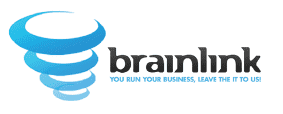Stop Asking “What Will We Save?” Start Asking “What Are We Missing?”
Your CFO wants to know the cost savings from AI implementation.
That’s the wrong conversation.
The Cost-Cutting Frame Is Costing You Money
Here’s the typical AI sales pitch:
“We’ll reduce your headcount by 30%” “Cut operational costs by $100k/year”
“Eliminate 2 FTE from your budget”
And here’s what happens when firms buy into that frame:
They implement automation. They cut costs. Their operations get more efficient.
And they completely miss the $500k revenue opportunity sitting right in front of them.
What Actually Happens When You Automate Operations
Recently, we implemented automation for a wealth management firm with an 8-person operations team.
Their team was spending:
- 20 hours/week on reporting
- 15 hours/week on data entry
- 12 hours/week on client follow-ups
- 8 hours/week on compliance documentation
That’s 55 hours/week on busywork. For an 8-person team (320 hours/week total), that’s 17% of their capacity.
We automated it all.
The CFO expected: “Great, now we can reduce headcount.”
What actually happened: The operations team redirected that 55 hours/week to:
Month 1-2: Analyzing their client portfolios
- Found 3 optimization opportunities they never had time to investigate
- Implemented them
- Result: +$60k annual value for clients (and improved retention)
Month 3-4: Deep-diving client communication patterns
- Identified early warning signals for client dissatisfaction
- Built intervention playbook
- Result: -15% client churn = +$90k annual revenue retained
Month 5-6: Redesigning due diligence processes
- Discovered they were missing high-value opportunities (too time-consuming to manually analyze)
- Built automated screening system
- Result: +$150k annual revenue from previously missed opportunities
Total revenue impact in 6 months: $300k+ annually
Total headcount reduction: Zero (and they didn’t want to)
The Hidden Opportunity Cost of Busywork
Your operations team isn’t operating at capacity. They’re operating at busywork capacity.
There’s a difference.
Operating at capacity means: “We’re doing everything we could be doing to drive business outcomes.”
Busywork capacity means: “We’re drowning in tasks that need to get done but don’t move numbers.”
The question isn’t “Can we do this with fewer people?”
The question is “What could our current team accomplish if they weren’t buried?”
Why Smart CFOs Are Reframing the Conversation
I had a conversation with a CFO at a family office last month who got this immediately.
Me: “We can automate 40% of your operations team’s weekly workload.”
CFO: “How much headcount can we cut?”
Me: “Wrong question. How much value is your operations team NOT creating because they’re too busy with manual work to look?”
Long pause.
CFO: “What do you mean?”
Me: “Your operations team probably sees patterns in your portfolios and client data every day that could be revenue opportunities. But they never have time to investigate. They’re too busy generating reports.”
CFO: “Shit. How much are we leaving on the table?”
Different question. Different outcome.
The Real ROI Model
Here’s the math that actually matters:
Traditional AI ROI Model:
- Cost of automation: $50k/year
- Labor savings: $80k/year
- ROI: $30k/year net savings
Actual AI ROI Model:
- Cost of automation: $50k/year
- Labor savings: $80k/year
- Revenue opportunities unlocked: $300k/year
- ROI: $330k/year net impact
The second model assumes your operations team is smart (they are) and strategic (they can be) and just needs time to think (they don’t have it).
Automation doesn’t replace them. It unlocks them.
What to Ask Instead
Next time your CFO asks about AI cost savings, flip the conversation:
Instead of: “How much can we save?” Ask: “What opportunities are we missing because our team is buried in busywork?”
Instead of: “Can we reduce headcount?” Ask: “What could our current team build if they had 20 more hours per week?”
Instead of: “What’s the labor cost reduction?” Ask: “What’s the revenue hiding in our operations team’s capacity?”
Different questions. Different outcomes.
The Firms Getting This Right
The firms winning with AI aren’t using it to cut people.
They’re using it to cut the busywork that’s suffocating people.
One managing partner told us: “We thought we needed more operations people. Turns out we just needed our existing team to have space to think.”
After automation: same headcount, 2.3x revenue growth from operational improvements they finally had bandwidth to implement.
The bottleneck wasn’t their team size. It was their team’s attention.
Want to see what revenue opportunities are hiding in your ops busywork? Brainlink offers free operational audits that map where your team’s capacity is being wasted. Find
your hidden revenue
